
DS 7 Review

Introduction
In case you didn’t know, DS is the luxury arm of Citroen (itself owned by Stellantis).
While several cars that wore the Citroen badge in the past included the name DS in their title, the habit of ‘spinning off’ these monikers into their own brand has now become commonplace.
DS is one of many examples – and it seems to have worked for Citroen so far.
Although some of DS’s range began life with Citroen badges, such as the DS 3, the DS 7 Crossback was a brand-new car that was first launched around six years ago.
It has recently had a facelift, and the ‘Crossback’ bit has been dropped from its name, so it’s just the plain old DS 7 nowadays.
But while it looks striking, can this mid-size SUV really compete with the likes of BMW and Audi?
Select's rating score* - 3.5 / 5
At A Glance
The revised styling now features a different front end with fresh headlights and the introduction of a new plug-in hybrid version.
It looks mean and Audi-ish, with inspiration no doubt taken from the German marque’s dominating hexagonal grille, which, on the DS 7, is filled in with a mesh design.
Horizontal slits make up the lower grille, with some modestly chiselled bodywork on either side.
The headlights look more aggressive, too, while day-running lights run along several lines beneath it, towards the bottom of the bodywork.
Around the sides, the cladding is more noticeable, with the doors shaped and indented at the bottom. Meanwhile, a fine crease runs along the whole length of the car’s body at the top of the doors.
At the back, the glow of the rear lights is presented in a mesh design, connected by a strip in the middle which reads 'DS AUTOMOBILES'.
For a reasonably sized car, it looks pretty athletic, fashionable and appealing.
So appealing that the French president, Emmanuel Macron, chose the special Elysée version of the DS 7 as his presidential vehicle for his 2017 inauguration.
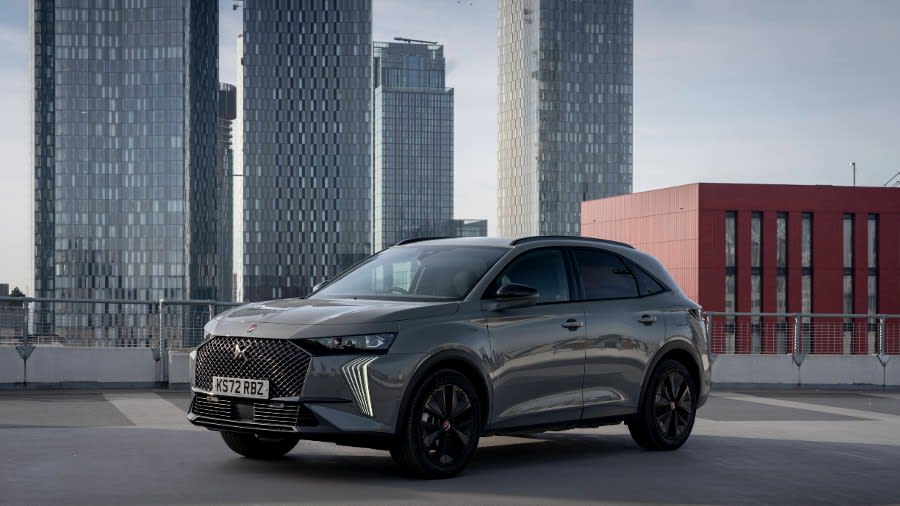
Key Features
Although DS has aimed to simplify the range, there are still no fewer than six trims.
The entry-level Performance Line gets 19-inch alloys, a 12.0-inch infotainment touchscreen, a 12.3-inch digital instrument cluster, pixel LED lights, keyless entry and start, aluminium sports pedals, automatic headlights, gearshift paddles and power-folding door mirrors, plus rear parking sensors and cruise control.
The Performance Line Plus gets heated and electronically adjustable front seats, a heated windscreen, reversing camera and black roof rails, plus Alcantara upholstery.
The Rivoli trim gets a front seat massage function, chrome roof rails, a 'brilliant black' front grille with chrome accents, a timepiece in the cabin, and grained leather upholstery.
The Opera grade adds ventilated front seats, a wireless phone charger and an electric panoramic sunroof.
Then the top-of-the-range La Premiere gets 21-inch wheels, an electric tailgate, Nappa leather upholstery, a 360-degree camera and a FOCAL Electra hi-fi system, which also includes laminated windows for additional soundproofing.
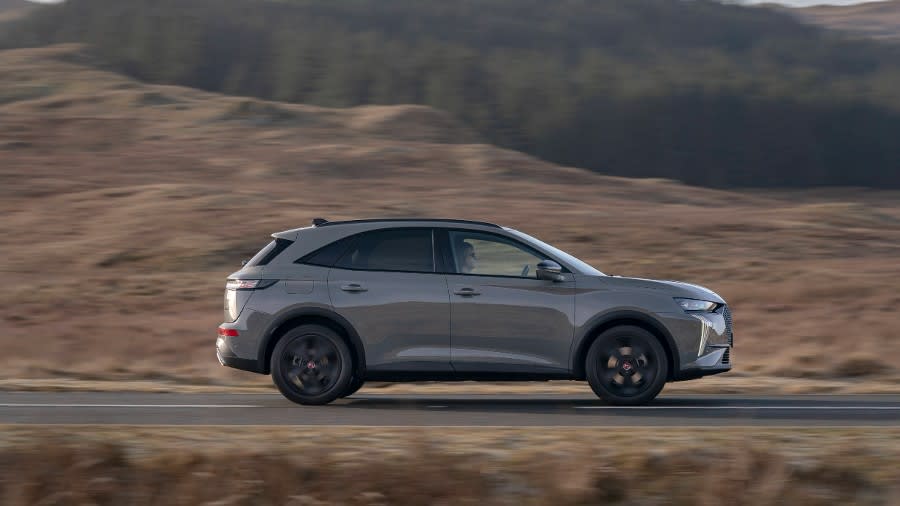
There is also the flagship edition and exciting-sounding ‘Esprit de Voyage’ trim, which sits between Rivoli and Opera in the price range and gets a pearl grey leather interior with Nappa leather décor, available only as a plug-in hybrid.
Speaking of which, there are several powertrains to choose from.
The BlueHDi 130 is a 1.5-litre four-cylinder 131PS turbodiesel.
There are also three petrol plug-in hybrids, with the E-Tense 225 producing 225PS, the E-Tense 300 making 296PS, and the E-Tense 360, which yields 355PS.
The diesel and entry-level plug-in hybrid are both front-wheel drive only – in the E-Tense 225’s case, it has a single electric motor.
The E-Tense 300 and 360 are dual motors, so they come with four-wheel drive.
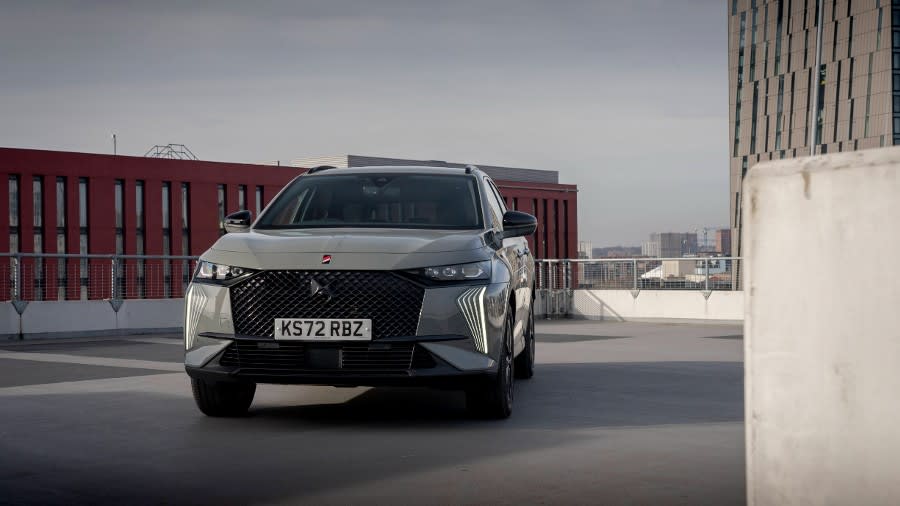
Range & Batteries
The E-Tense range of plug-in hybrids all house a 14.2 kWh battery.
All-electric range is 35-43 miles for the E-Tense 225, 38-42 miles for the 300 and 36 miles for the 360. Be sure to get the most out of your EV range and read through our guide to official v. real world range.
Of course, that's from a full charge, so it depends on you keeping the batteries topped up, while achieved range in practice will depend heavily on driving style, not to mention things like ambient temperature and road conditions.
In reality, expect less than the quoted figures.
Performance & Drive
The E-Tense 360 we're testing packs a punch, with a 0-62mph time of just 5.6 seconds.
The torque can take you by surprise if you bury the throttle, and it's entertaining, but in all honesty, it's overkill.
Unless you're regularly going to have a car-full – or you're regularly late for work – nobody needs that much power in an SUV.
Even the E-Tense 300 is only 0.3 seconds slower getting to 62mph.
Admittedly, our inner child can't help but be tempted by both, given the economy figures are so good thanks to their electric motors. But they're too expensive to recommend. However, they might be helpful if you especially need four-wheel drive.
As for the diesel, with just 131 PS, it offers civilised low-end grunt but doesn’t quite feel up to the job, especially if you’re carrying passengers, and it takes 10.7 seconds to get from 0-62mph.
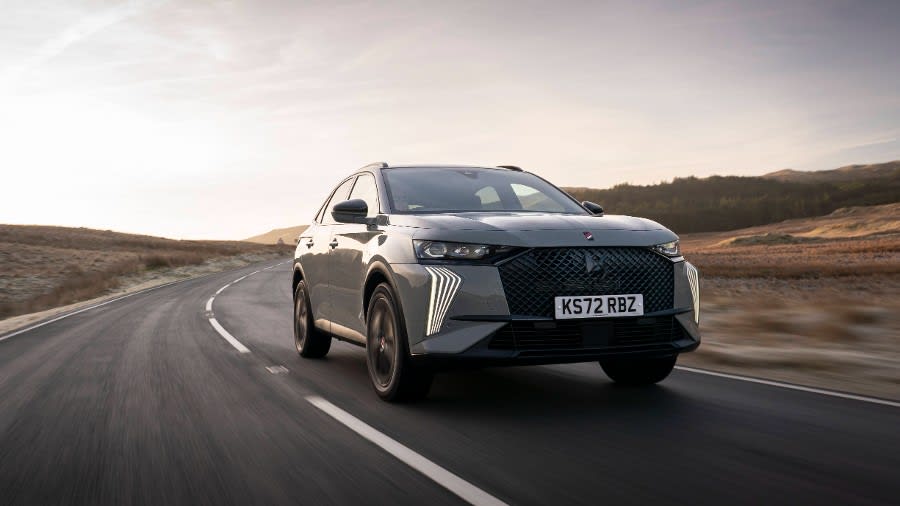
That leaves the entry-level hybrid, the E-Tense 225, which bridges the gap, going from 0-62mph in 8.9 seconds which is perfectly adequate for an SUV.
It is the sensible, go-to choice, considering the economy, price point and performance.
As a result, it’s easy to see why the 225 is expected to be the most popular model.
Nought to 62mph times might not be necessary to you, but the point is that the diesel feels as though it needs to be thrashed to get any decent performance out of it. Meanwhile, the E-Tense models can do the same on tap without breaking a sweat.
And, in a reasonably big SUV, it’s always nice to know you’ve got plenty of power in reserve.
As a result, the hybrids are easier to live with daily, although the diesel may suffice if you're mainly going to be driving it in stop-start traffic at rush hour.
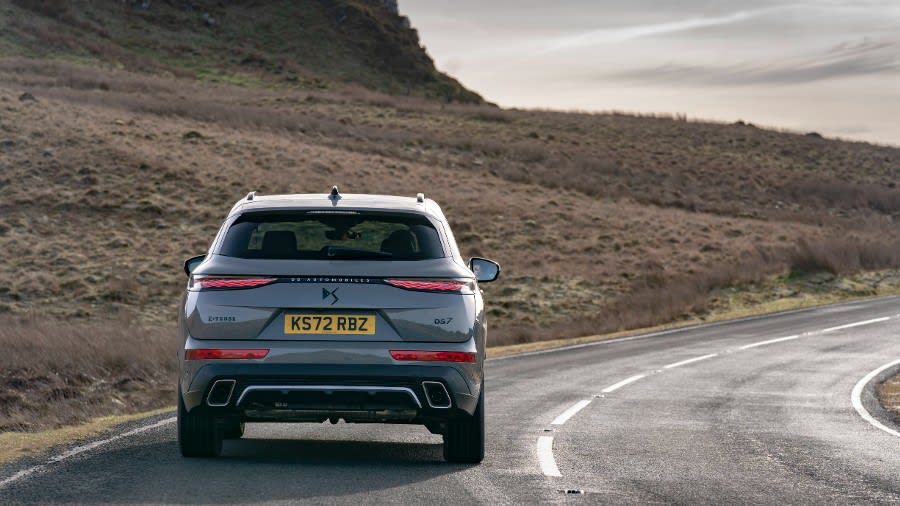
All the hybrids move away well, with a burst of torque from the electric motor, unless you tell it otherwise. The powertrain will always start in all-electric mode, which reduces the clout off the line, saving the engine for when it's needed.
Mind you; the DS 7 doesn't provide for the smoothest transition when the engine kicks in and out, especially when you demand a change-down from the automatic gearbox, which causes an excessive delay in responding to your throttle inputs.
Indeed, the automatic gearbox can be too happy to change up and down when you aren’t expecting it to.
Nevertheless, all the hybrids feel pacey and full of life, despite the additional weight of the batteries.
Around town, the power of the hybrids is arguably excessive. Still, then you can switch to all-electric mode and find that the reduced output with the engine off suits the traffic conditions perfectly.
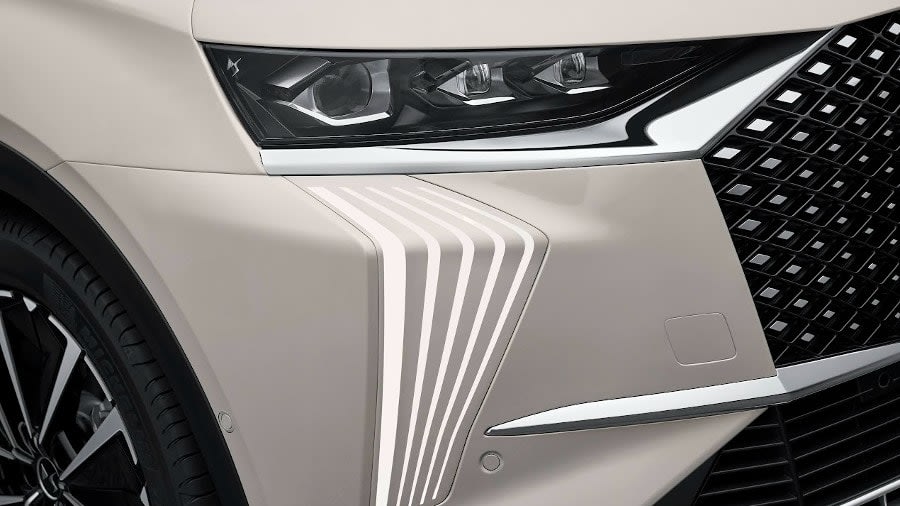
In terms of handling, the DS 7 isn't much to celebrate, but that's to be expected, as no SUV can be said to handle exceptionally well.
With that in mind, the grip levels are perfectly acceptable, and the steering weights up nicely around bends.
Push it too hard, and you'll encounter quite a lot of body lean, which even the best engineers won’t be able to solve in an SUV.
The diesel, which is lighter than the hybrids, generally feels slightly nimbler but not enough to tempt us away.
It is not bad, but it remains in the shadow of premium German adversaries in terms of its performance on the road.
One area where it can compete, though, is in the ride comfort, which uses cameras to preview the road surface ahead, adjusting the suspension accordingly to maximise smoothness.
It is called Active Scan technology, and it works well. But you can make the ride even more comfortable yourself by downgrading the size of the alloys, which are 21 inches further up the range, and 19 inches lower down.
Finally, when you come to slow down, the regenerative braking on the plug-in hybrids feels consistent and predictable.
Driving the top-of-the-range La Premiere also helps make the journey more peaceful, thanks to the additional soundproofing we mentioned earlier.
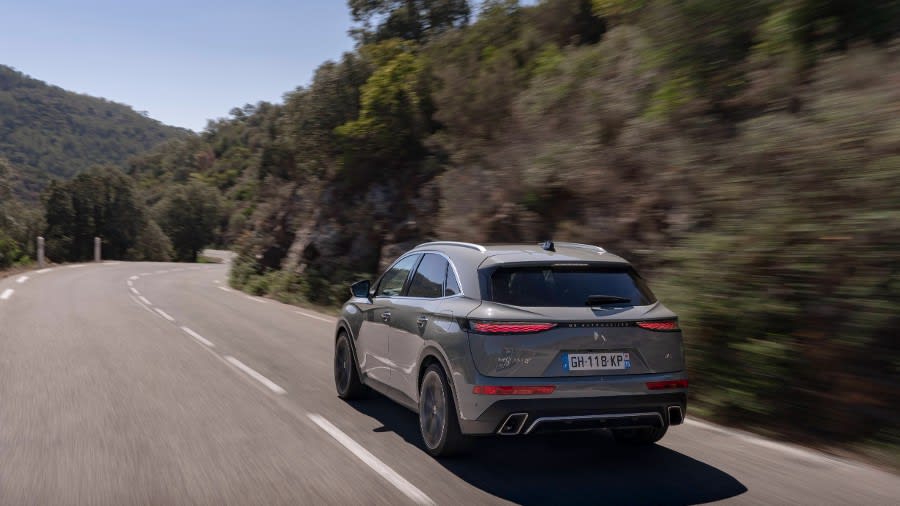
Charging
If you plug in any of the E-Tense models to a domestic socket at home, it'll charge at a rate of 2.3kW, taking six-and-a-half hours to achieve a full charge from empty.
If you have a 7kW home wallbox, the E-Tense 360 will take just under two hours to charge up.
It is the same for the E-Tense 300, but the 225 has a slower charging speed and will take three and three-quarter hours.
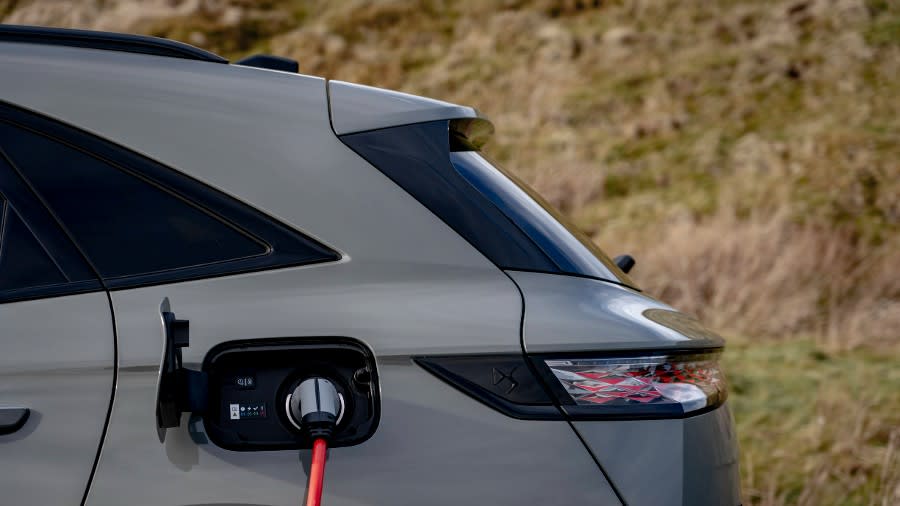
Running Costs & Emissions
The diesel engine can manage up to 53.3 mpg, producing 140 g/km of CO2 in the process.
That is not bad for a vehicle of this size, but the plug-in hybrids are in a different league, with the E-Tense 225 managing 178 to 250 mpg, producing 28 g/km of CO2.
Unexpectedly, the dual-motored E-Tense 300 does even better, achieving 193 to 250 mpg and just 27 g/km of CO2.
The E-Tense 360 we’re driving can do 161 mpg, releasing 40 g/km of CO2 in the process.
Company car users will likely want to opt for the plug-in hybrids due to the savings in Benefit In Kind tax that environmentally friendly cars attract.
DS is still a new standalone marque, so it's difficult to say how dependable it will be long term.
Of course, we can look at parent company Citroen which hasn't been historically renowned for reliability, but recent surveys suggest it’s on the up.
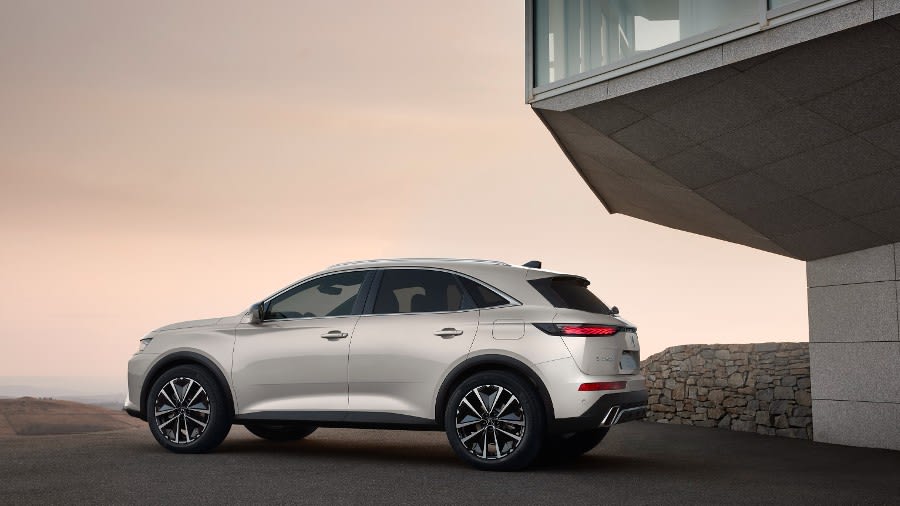
Interior & Technology
The DS 7 has a classy interior, with a flat-bottomed steering wheel and a high centre console which, along with the dashboard-mounted infotainment screen, gives it a cockpit-like feel.
Rather than sitting on top of or being embedded in the dashboard, the touchscreen looks like it's been bolted on as an afterthought, yet it doesn't look out of place.
You will find a couple of dashes of silver trim on the steering wheel, and more silver décor surrounds the entire area around the gear lever, incorporating two cup holders.
It looks fantastic, but there are some catches. Although it has a premium feel, it only takes a little while to realise that the build quality is not on par with the likes of BMW.
You might not expect it to be, given Citroen owns DS, but then the whole point of spinning off DS as a brand in its own right is so it can start with a clean slate without the stigma of a non-premium badge. Despite the stunning looks, some of the materials feel cheap, and all of the silver is just plastic. You will also find plenty of budget plastics further down.
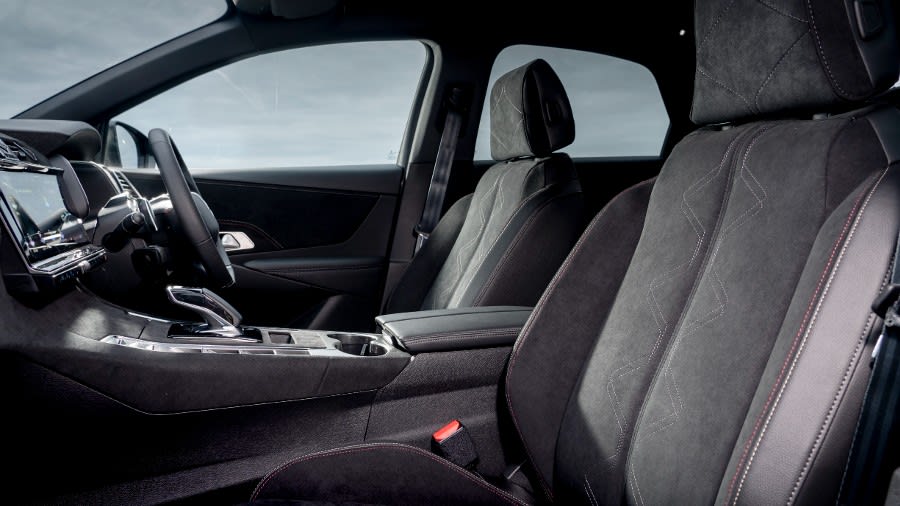
The infotainment system may look nice – and it is, with a clear display and a reasonably intuitive interface. But, frustratingly, you can barely do anything without actually touching the screen. This makes it difficult to operate on the move, and the shortcut buttons, which are supposed to make it easier to use, are touch-sensitive, so they can be easily incorrectly pressed if you're trying to keep your attention on the road.
The air conditioning, annoyingly, lacks physical dials and buttons, too.
At least the screen is reasonably responsive, while the 12.3-inch digital instrument cluster offers plenty of customisability, allowing you to prioritise the information that matters most. When the navigation is in use, it’ll also display the directions in front of you, which makes things easier.
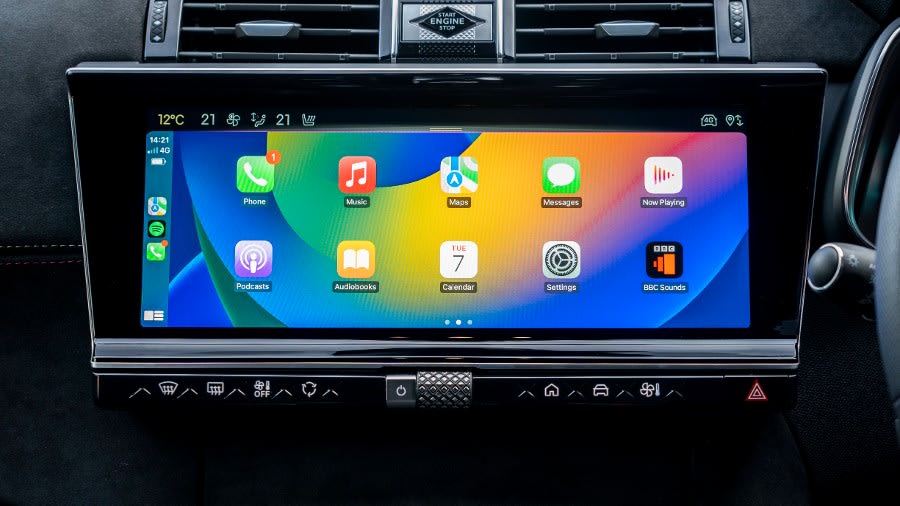
Practicality & Boot Space
There is a lot of travel in the steering wheel and driver’s seat, which makes it easy to find a suitable driving position, even if you need quite a lot of legroom.
In terms of space, DS has provided the best of both worlds, with the high centre console giving you that cocooned feel while also providing you with sufficient space so you don’t feel claustrophobic.
If you’re tall, there’s still plenty of headroom to spare, and it’s much the same in the back, which offers plenty of room for fully-grown adults.
The lack of a tunnel underneath the floor also means that a middle-seat passenger won’t feel too cramped.
There are plenty of places to store smaller belongings, such as phones, cables and water bottles, with decent-sized door bins and a generously sized cubby in the centre console.
The Opera trim and above get a wireless charger, which means you also get another cubby behind the gear lever.
Visibility is good out of the front, although you may rely more on the rear parking sensors to see out of the back because the diagonal shape of the rear pillars hinders your view.
The Performance Line Plus gets a rear-view camera, which helps even more when reversing.
The boot has a capacity of 555 litres which, handily, isn’t reduced in the plug-in hybrids as it is in most cars, while higher-end models have an adjustable boot floor.
The available space extends to 1,752 litres if you put the seats down, but they only fold in a 60/40 split, rather than the more versatile 40/20/40 configuration you'll find in some of its rivals.
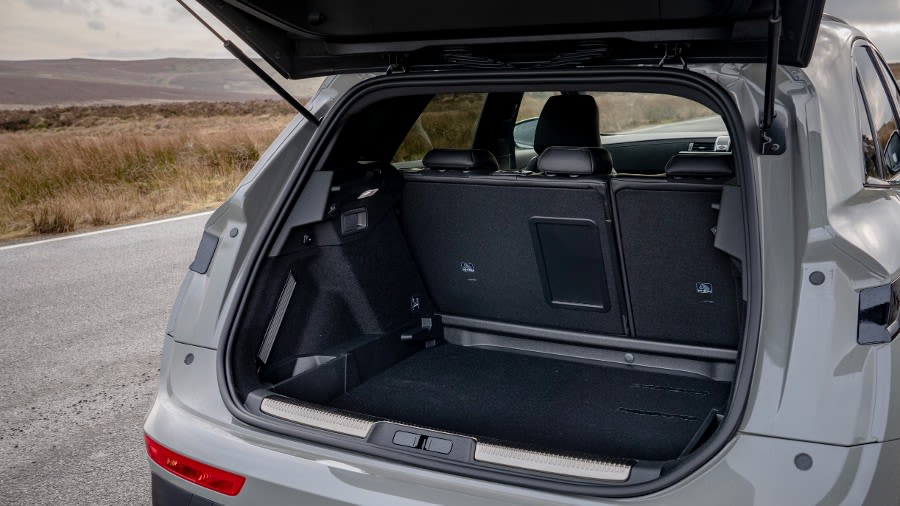
Safety
The DS 7 was awarded a five-star rating after being thoroughly put through its paces by crash-testing experts Euro NCAP.
That included an impressive 91% score for adult occupants, 87% for children and 76% for safety assists.
Those assists include automatic emergency braking, blind spot detection, lane-keeping assist and lane departure warning, plus driver attention alert.
The Opera and La Premiere grades get DS Drive Assist, which includes semi-autonomous driving, lane positioning assistance and adaptive cruise control.
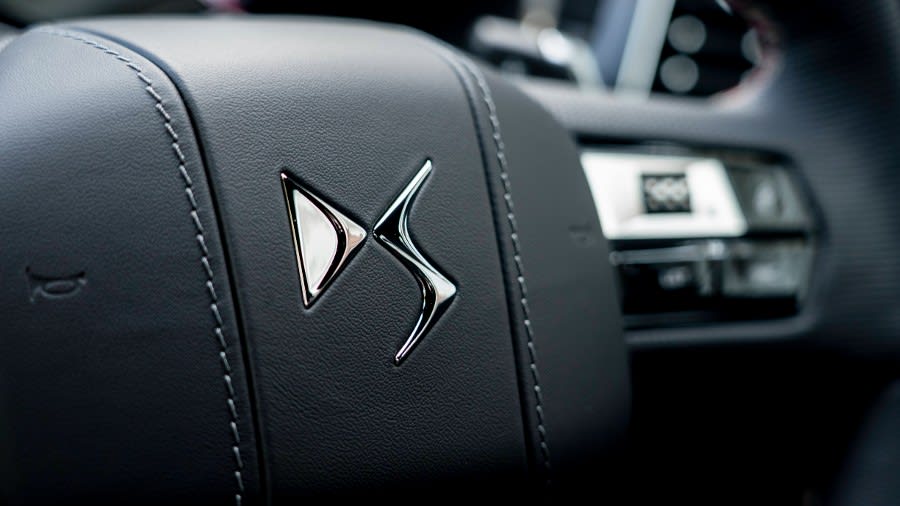
Options
There is quite an extensive options list, depending on which model you choose.
The Performance Line Plus, Rivoli, Esprit De Voyage, and Opera models come with 19-inch wheels as standard but can be upgraded to 20 inches if desired.
The Rivoli trim is the only one that doesn’t come with aluminium sports pedals as standard, but these can be added, too.
The electric tailgate and the 14-speaker FOCAL Electra premium sound system only come as standard on the La Premiere model. But each can be selected for any trim in the range if you don’t mind coughing up a bit extra for them.
The same applies to the panoramic sunroof, which is only included as standard on Opera and La Premiere trims, although bear in mind this eats into the available headroom.
Front parking sensors and a 180-degree reversing camera are included on all but the entry-level Performance Line trim, but if you choose this, you’ll be able to add them on.
It misses out on the DS Drive Assist system, though, which can be added to all models where it’s not included as standard.
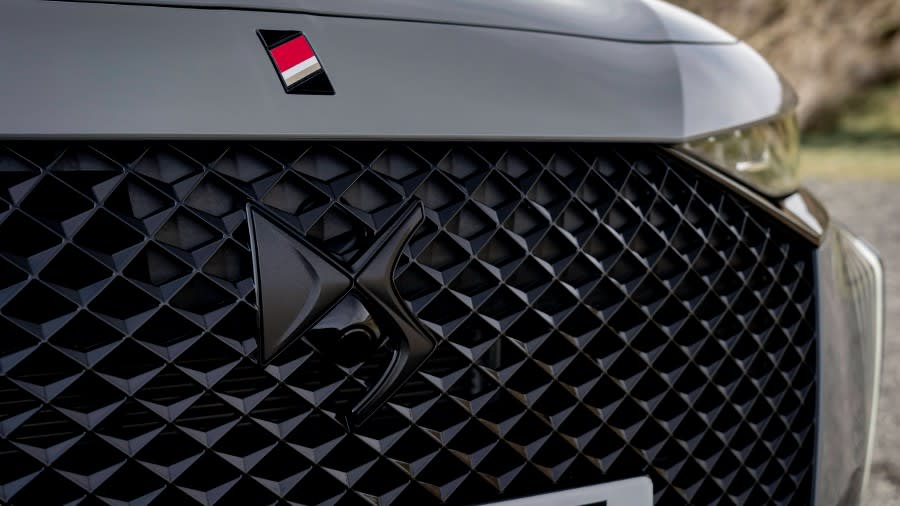
Rival Cars
The DS 7 is aiming at the higher end of the market, so it’s going up against the likes of the BMW X1, X3 and the Audi Q3 and Q5.
In all honesty, it doesn’t match the German brands' superior quality, but you may decide that it doesn't matter when you see its looks, both inside and out.
The Lexus NX is also worth considering, along with the Jaguar E-Pace, Mercedes-Benz GLA and Volvo XC40 Recharge.
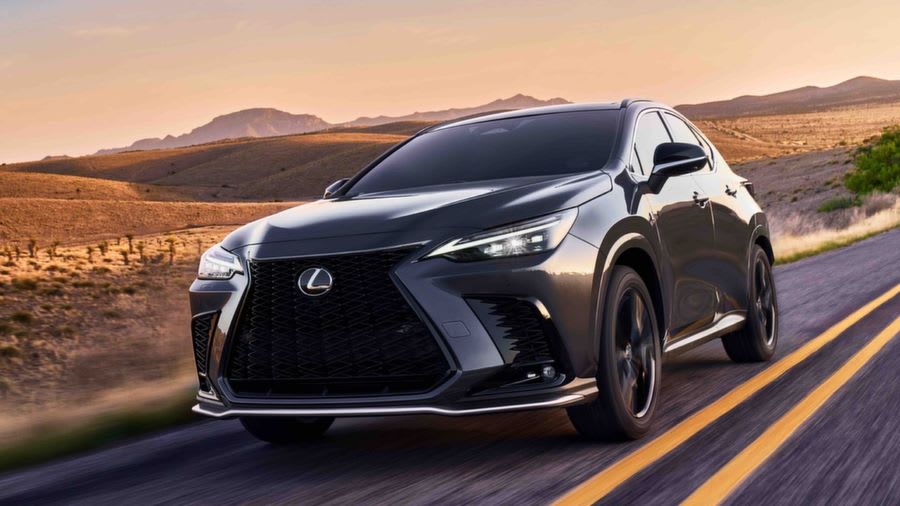
Verdict & Next Steps
Overall, the facelifted DS 7 is a terrific effort with plenty going for it.
Indeed, with the lower-powered plug-in hybrid, it packs enough of a punch and returns fantastic economy figures. So we can only justify the E-Tense 300 or 360 if you need four-wheel drive or are obsessed with maximum power.
It is well-equipped, too, even at entry-level, and the interior is comfortable, spacious and inviting to sit in.
But, despite the cabin’s many plus points, the materials can feel cheap in places, and the infotainment system's lack of controls is frustrating.
What’s more, the entry-level plug-in hybrid is generally pricier than a BMW X1 or an Audi Q3 and, given the names the DS 7 is up against, the expense may not be justified.
Its exterior looks and appealing interior design might win the day, but it's in a battle with the long-established premium brands.
Where to next?
View our latest DS7 lease deals, from £438.14 per month**.
Call us on 0118 3048 688 or hit the green 'Enquire' button for more details.
Looking for a great leasing deal? Check out our incredible range of car lease deals
New hatchback? Read our latest Car Reviews and find the right model for you
Want to know more about leasing? Take a look at our comprehensive Leasing Guides
Interested in everything motoring? Why not catch up on all the latest Car Leasing News.
*Score based on Select’s unique meta score analysis, taking into account the UK’s top five leading independent car website reviews of the .
**Prices include VAT. Credit is Subject to Status, Ts and Cs and Arrangement Fees apply. Excess mileage may apply. Stock levels and prices correct as of 03/05/23.



















